Undercover at Toodyay
"Undergarments: Items of clothing worn beneath outer clothes, often next to the skin."
This digital exhibition is about underwear, and is based on a display presented at the Newcastle Gaol Museum between June 2017 and October 2019. The photographs included here show objects from the Shire of Toodyay’s heritage collections, most of an unknown origin.



Before the Victorian period, the difference between men and women’s undergarments was nowhere near as marked as it is today. In the 19th century, new moral codes emerged valuing hygiene and concealment. At the same time, cheaper manufacturing materials and methods supported mass production.
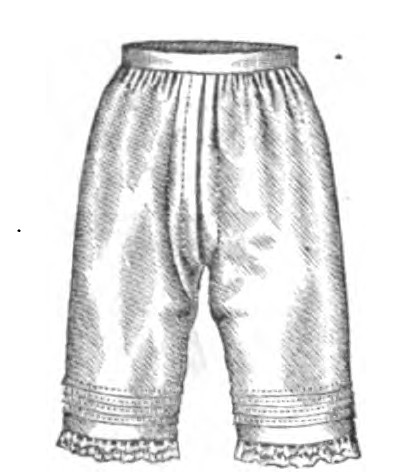
Ladies’ open drawers, Arthur’s home magazine, 1874. Image courtesy: Wikipedia (work in the public domain)

The first specially-made female undergarment — the drawers — did not appear until around 1800. In Britain and her Colonies (including Australia) they were not taken up by women until around 1830, and even then probably not by all.
Before drawers became acceptable, the only underwear worn by most women was a long linen garment called a shift, a.k.a. a smock or chemise.

The Chemise
In the 18th century, the primary female undergarment was the chemise or shift.
Open-necked, usually with short sleeves, it provided an important protective layer between the underarms and the outer garment. For men, the chemise morphed into the smock-frock worn by English labourers until the early 20th century.
In Western countries, the chemise as an undergarment fell out of fashion in the early 1900s.
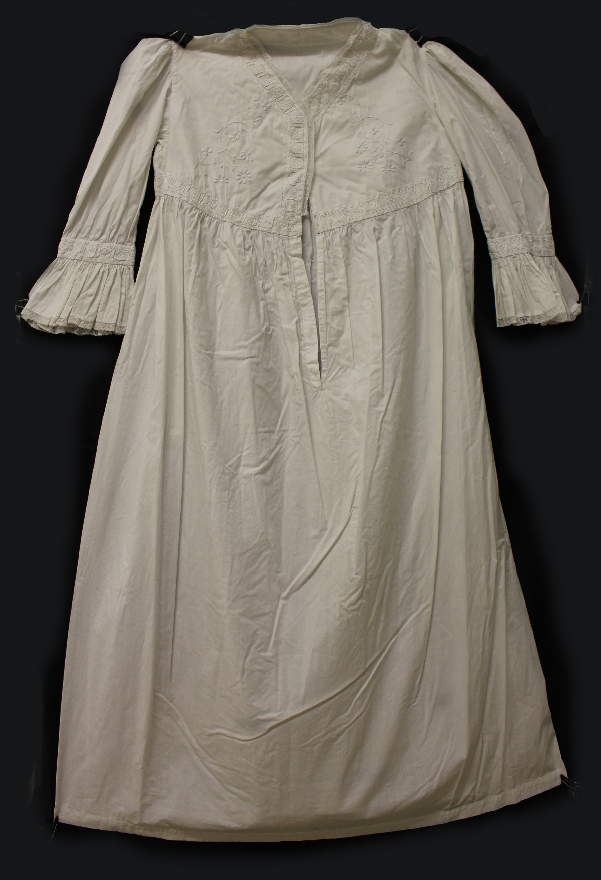
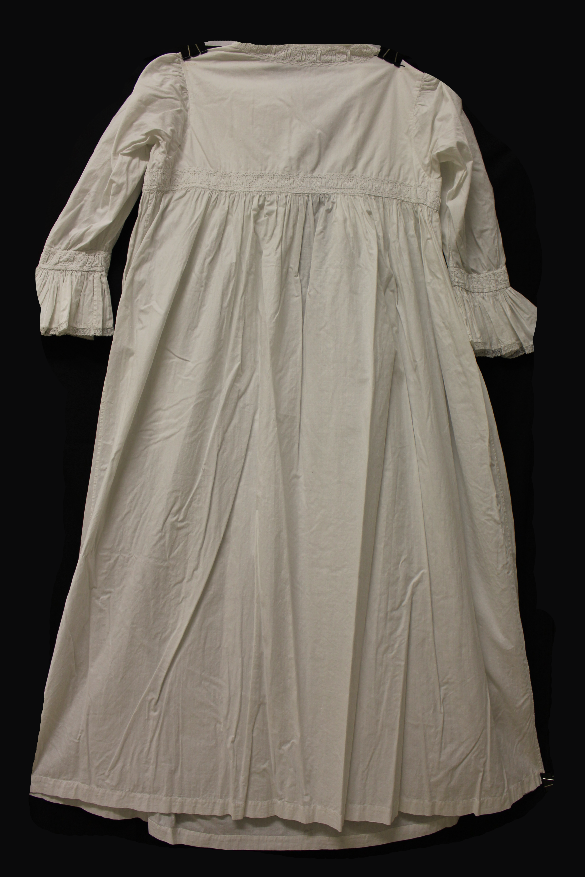
A long white chemise, long-sleeved with frills. Made of handmade linen with white embroidery work. Handmade lace has been attached by hand. Two handmade cloth-covered buttons. Early 1900s. (2001.233)
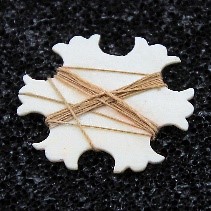
Ivory cotton winder. (2001.516)

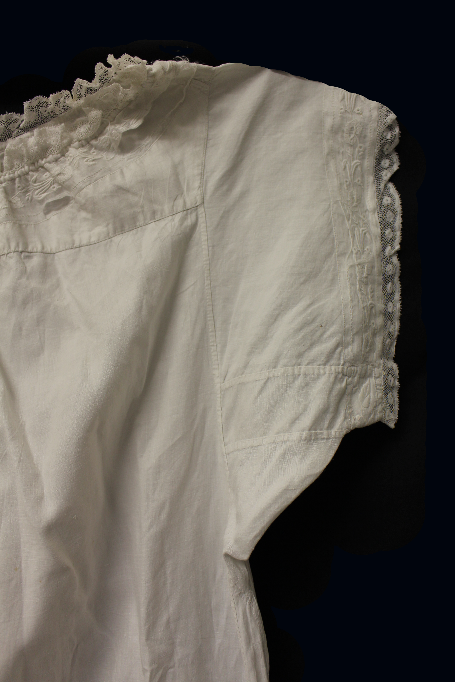
White chemise with lace, short-sleeved. Hand-spun and hand-woven linen, entirely hand-stitched. White-on-white embroidery and handmade lace at neckline and edge of sleeves. Small covered button at top of front opening, above which is a drawstring. Dated by handwriting on garment in black ink 1849 and signed E Dewberry. (2001.234)

Needle tin, 6cm length, cylindrical with numbers around one end which turned to allow different sized needles to be dispensed. 'Mitrailleuse' refers to the resemblance to long-barrelled military volley guns. 1890-1900. (2001.514)

The Camisole
A sleeveless undergarment covering the top part of the body. It is shorter than a chemise.
Centuries ago, chemises were worn by both men and women as an undergarment. However as fashions developed, chemises grew unsatisfactory for covering corsets and another piece of clothing was needed. The camisole evolved to serve this need.
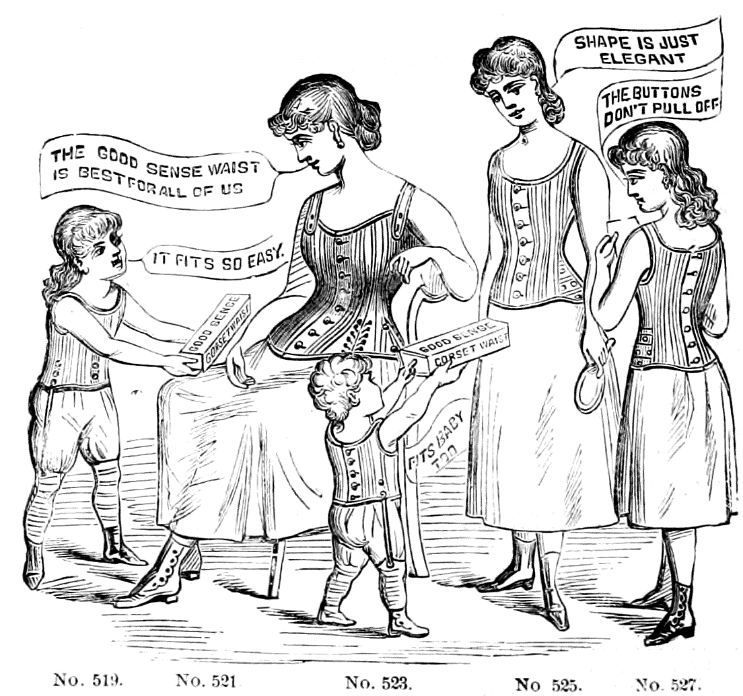
Good sense corsets for the whole family, H. O’Neill & Co. Fashion Catalogue, 1890. Image courtesy: Wikipedia (work in the public domain)


Small, two-hole button made from mother-of-pearl. (2020.164)

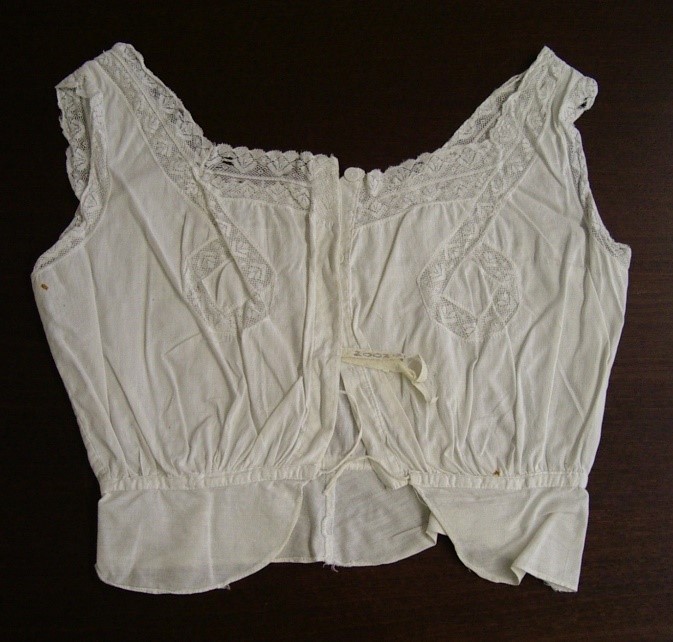
Camisole made of muslin (in a fine Indian cotton). Square neckline with front inserts and neck and armhole edgings of machine made lace. Drawstring waist. Hidden placket* front opening with two cotton-covered buttons intact and a third one missing. Circa 1910. (2003.31)
*A placket is the opening in the upper parts of trousers or skirts, or at the neck or sleeve of a garment. In modern usage it often refers to the double layers of fabric that holds the buttons and buttonholes in shirts.

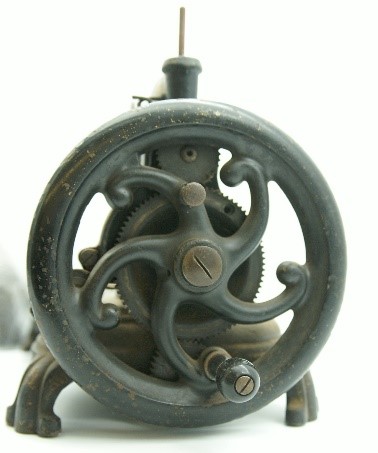
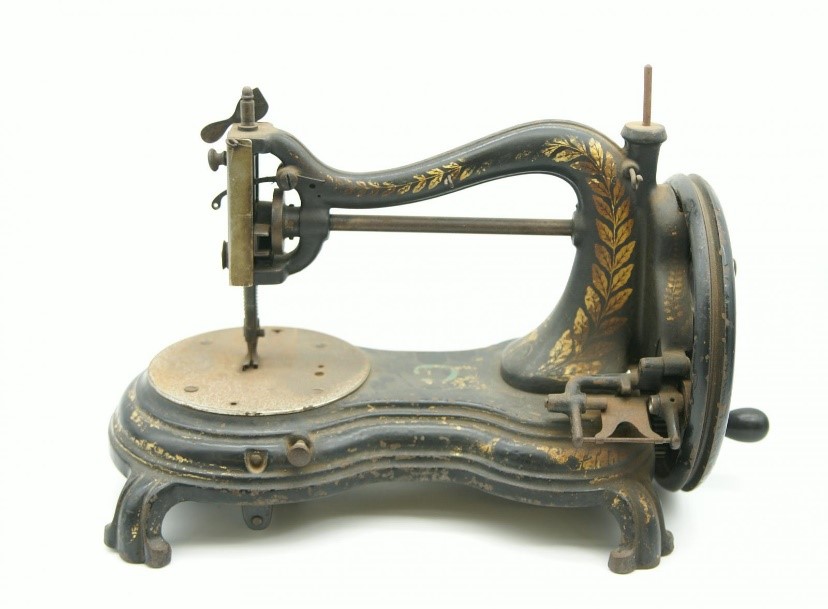
Hand-operated sewing machine, made by Jones & Co., Manchester. Circa 1888. (2001.261)
The Petticoat
An undergarment worn under a skirt or dress, the petticoat developed at the end of the Middle Ages as a skirt worn under an over-gown. By the beginning of the 16th century, the over-gown had an inverted V opening and the petticoat, now visible, was brocaded or embroidered.


French noblewoman, 1650. English countrywoman with red petticoat.
Illustration first published Nordisk familjebok, 1876. Illustration by Lucan de Heere, circa 1570.
Image courtesy: Wikipedia (work in the public domain) Image courtesy: elizabethancostume.net

In the 17th century the outer skirt was looped up, showing the petticoat underneath. In the early 19th century, fashion-conscious women wore many petticoats (six or more) to showcase the great fullness of the skirt. By the 1850s however, voluminous petticoats were abandoned for the caged or hooped underskirt frames — the crinoline — over which just one petticoat could be worn to soften the cage ridges. Under the frame women’s legs were able to move much more freely again.

Crinoline cutaway diagram from Punch magazine, August 1856. Image courtesy: Wikipedia (work in the public domain)

By 1900 skirts had become less full, the crinoline was discarded, and the petticoat was visible only when a woman lifted her dress, such as when crossing the street. Thereafter, petticoats became increasingly less important and were worn only as undergarments.
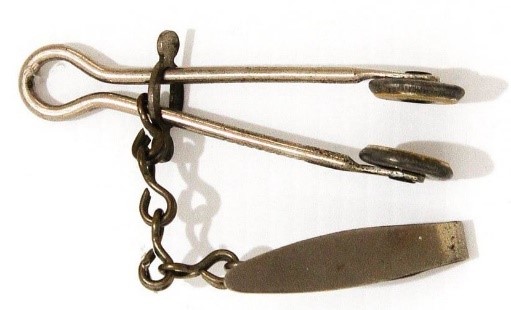
Ladies’ skirt lifter - clamped on to the hem and attached to the belt by a cord, ribbon or chain. (2020.242)

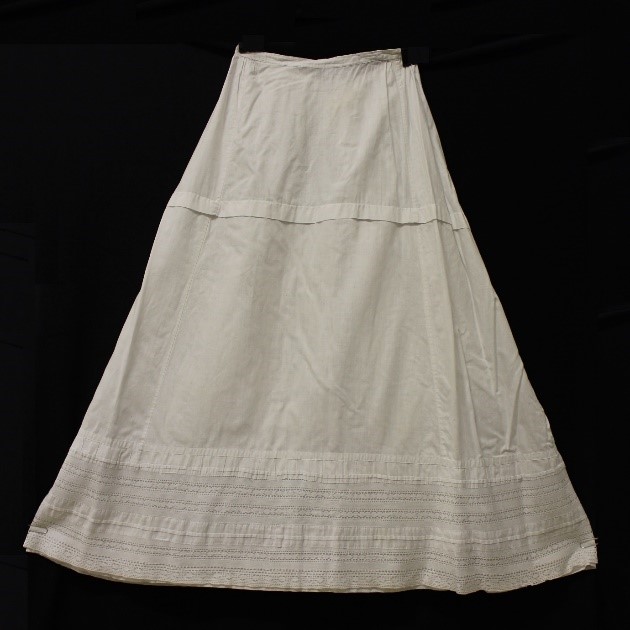
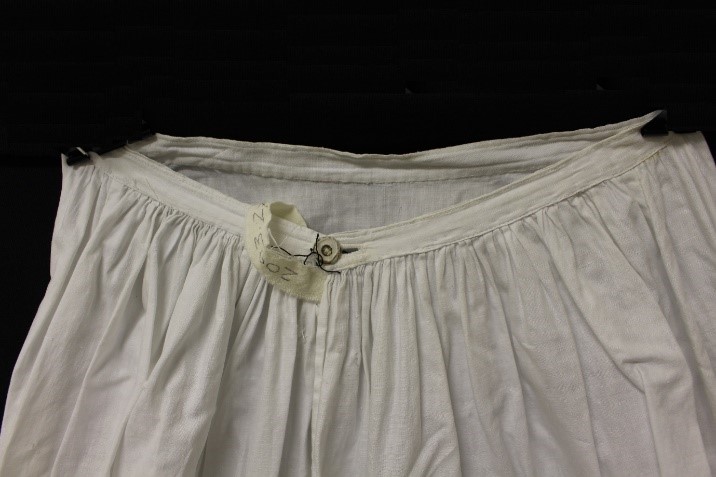
Petticoat made of cotton, machine sewn. Long, traditional, double-layered along the bottom and offset with white machine-made lace. Made of four sections with gathered waistband. One original white cotton-covered button at the back of the skirt at the waist. Circa 1920s. (2003.27)

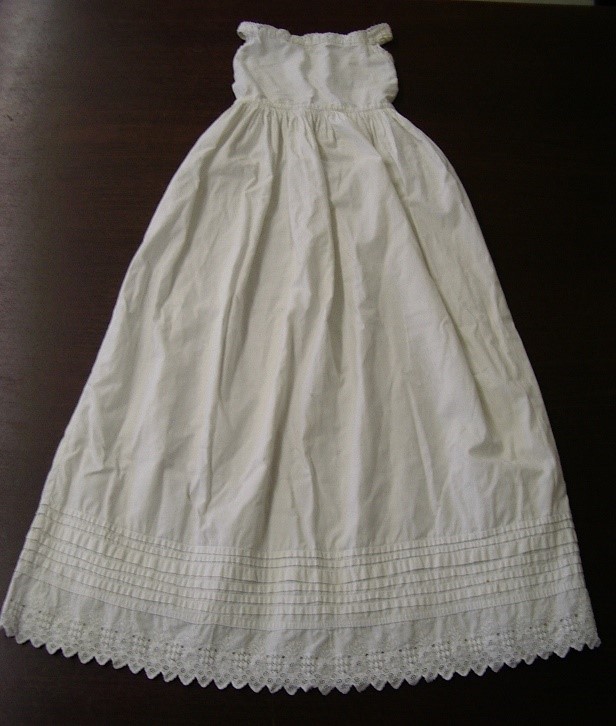
Petticoat for baby’s christening gown. Length 92cm. Heavy cotton. Broderie Anglaise* trim around neck and armholes. Six tucks and lace trim at hemline. Garment is machine-sewn and gathered at the bodice. Unknown origin. (2001.337)
*Broderie Anglaise — French for 'English embroidery' — is a whitework needlework technique characterised by patterns composed of small holes or eyelets with overcast or buttonhole stitches.

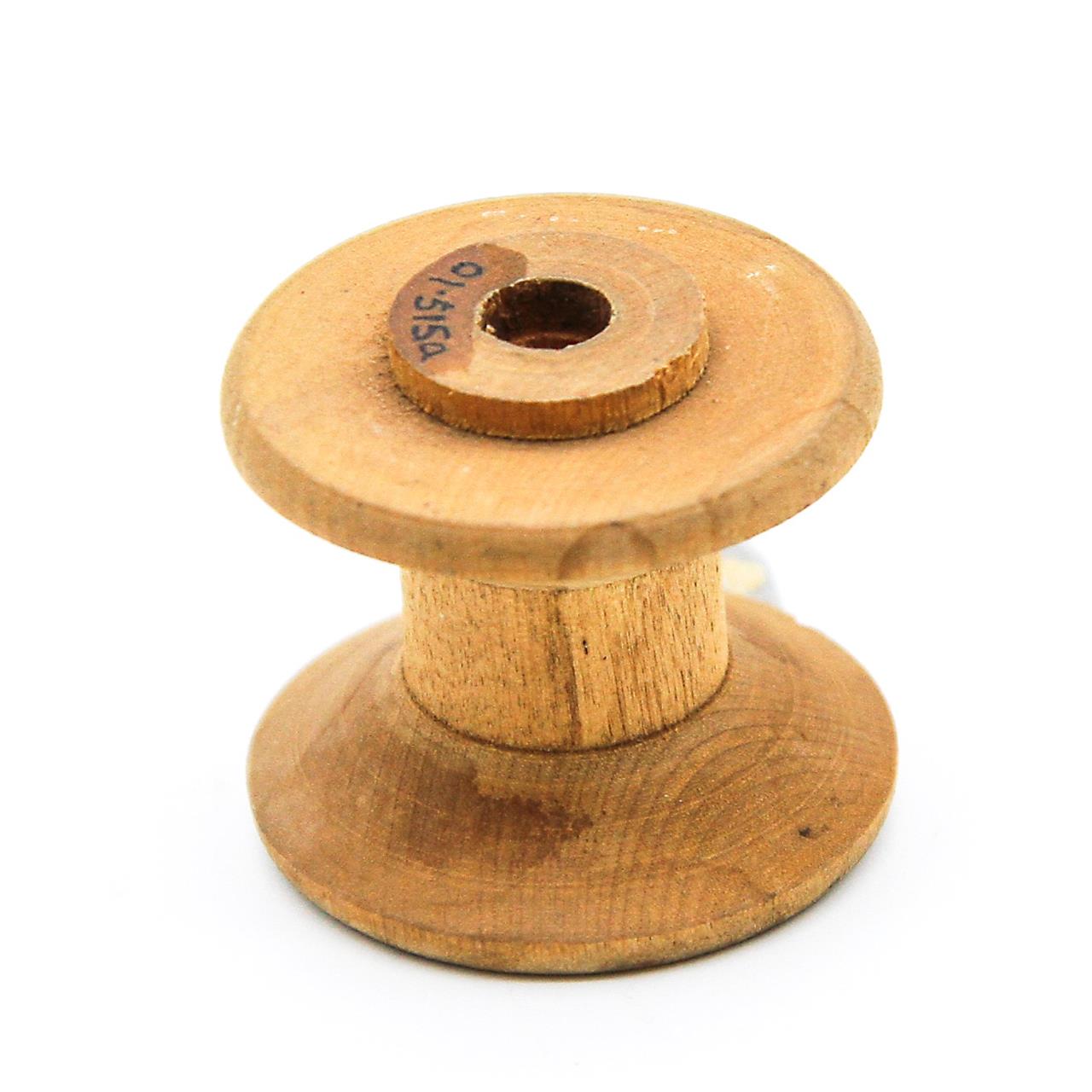
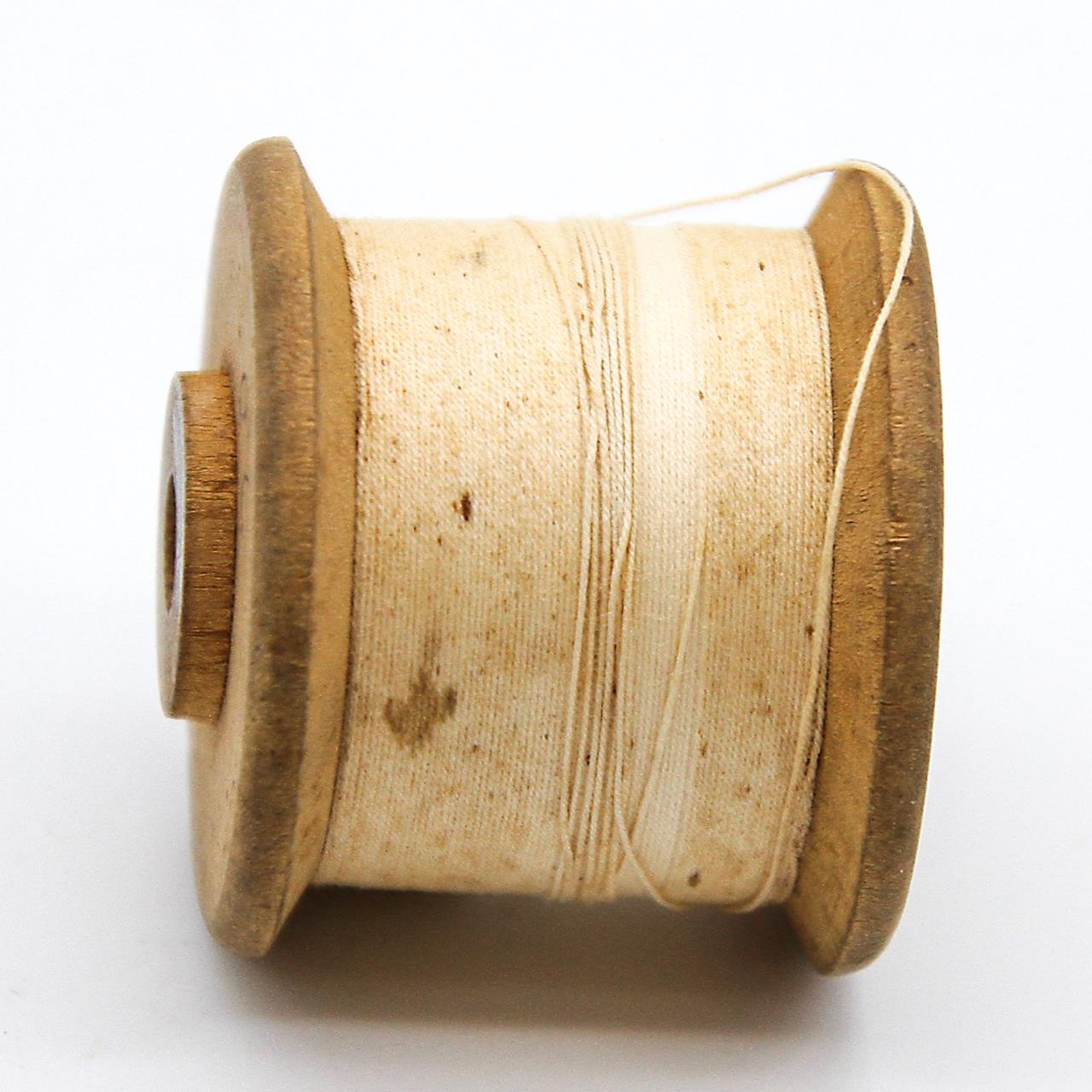
Wooden cotton reels. (2001.515a, 2001.515e)

The Nightgown (female)
Right up until the early 1800s, people in many parts of the world used the same clothing while awake and for sleeping.
Modern nightgowns originate from nightshirts on men, or night-chemises on women. These tended to be just day shirts or undergarments.
While the introduction of nightgowns into Western culture did eventually become commonplace, in the 1700s they were seen as a luxury item for the most wealthy. By the 19th century the nightgown had been adopted by the middle and upper classes.
Nightgowns were handmade during most of the Victorian era and followed the same basic shape. They were long, white and had capped or long sleeves.
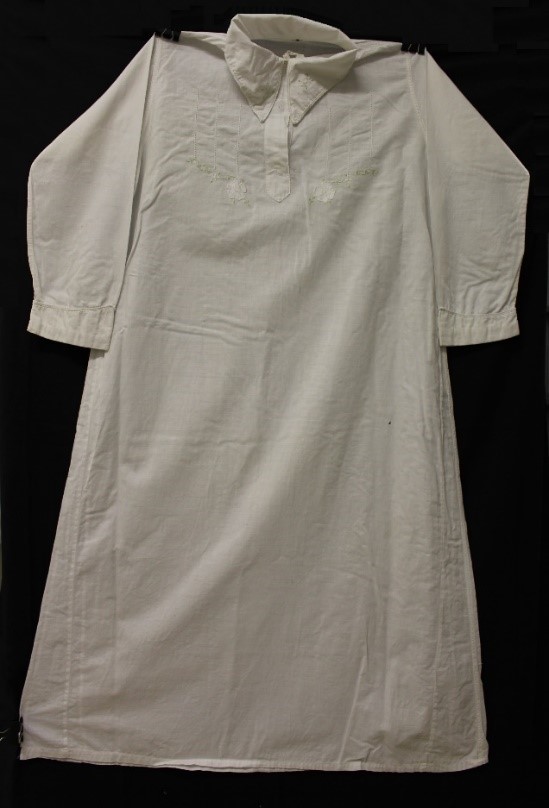
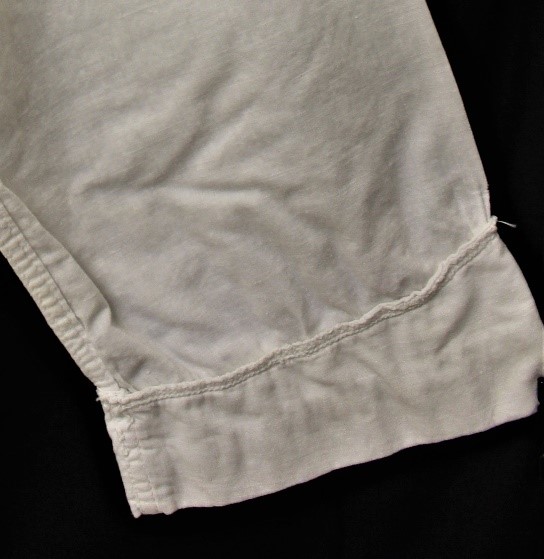
Nightgown. Commercially made with soft cotton fabric. Embroidery on front and on collar. Narrow machine made lace collar and cuffs. Circa 1900. (2003.39)

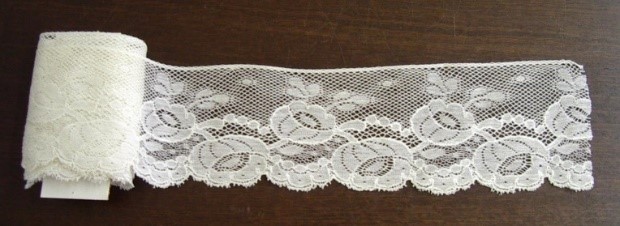
Length of Valenciennes lace edging, hand-made. (2001.132)
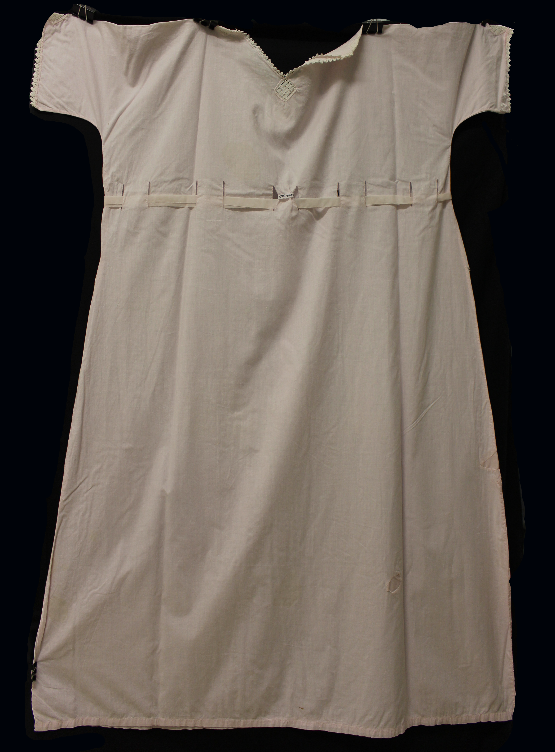
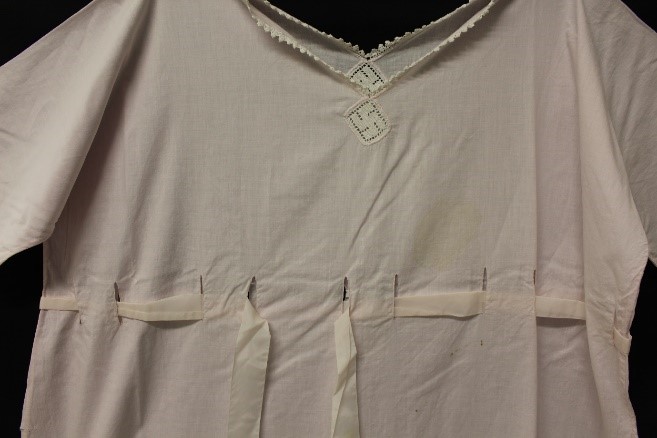
Nightgown in fine pink cotton. Machine-sewn with some hand-sewing in parts. Nylon ribbon at the waist. Four crocheted off-white hardanger* inserts (with swastika** motif) and a crocheted edging along neck and sleeves. (2001.365)
*Hardanger embroidery is a form of embroidery traditionally worked with white thread on white even-weave linen or cloth, using counted thread and drawn thread work techniques.
**The Nazis adopted the swastika as their emblem in 1920. Prior to this, the Sanskrit symbol was widely used throughout Europe and represented good fortune. Swastikas remain a common sight today on temples or houses in India or Indonesia.
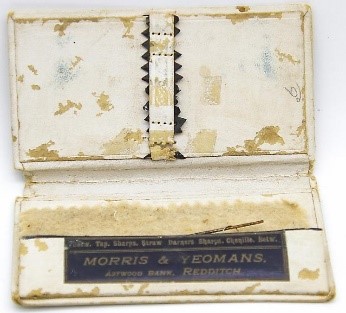
Needle case for holding various types of needles, owned by AE Whitfield. (2001.513)


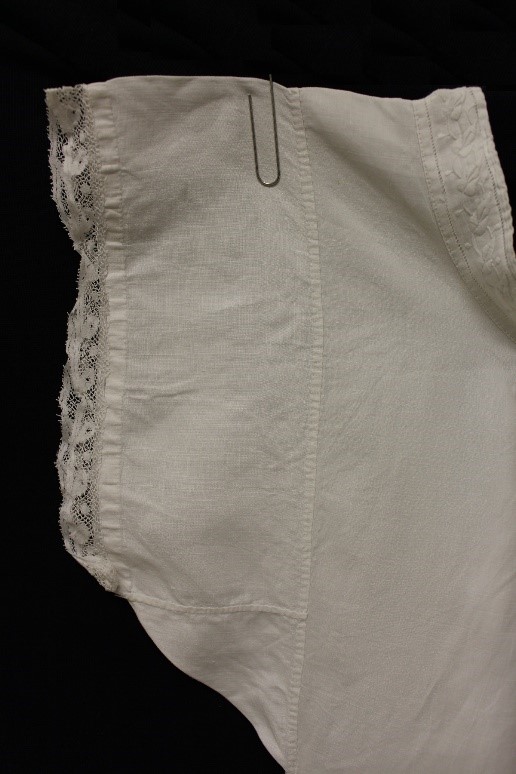
Nightgown. Linen. Short sleeved. Entirely hand spun, stitched and woven. Embroidery along neck and the sleeves are set off with a narrow edging of handmade lace. Constructed with triangular gussets inserted into skirt (with French seams*), short rectangular sleeves with square gusset inset under arm (also with French seams). Neckline has plain cotton drawstring through tape, with foliar design on outside. Three small cotton buttons. Dated by handwriting on garment in black ink 1849 and signed E Dewberry. (2003.25)
*French seam: a strong seam stitched on both sides of the fabric to enclose all raw edges
The 1920s ushered in a new era. There was experimentation with new fabrics, colours, ‘exotic’ styles and embellishments. Pyjama sets also became popular.

Combination Undergarment (male)
18th century men wore a linen chemise and sometimes drawers. Most men tucked their chemise in between their legs to act as make-shift underpants, but as the 1700s evolved it became more common for men to wear drawers under their breeches.
At the start of the 19th century, European men customarily wore separate undershirts and drawers beneath their outer clothes.
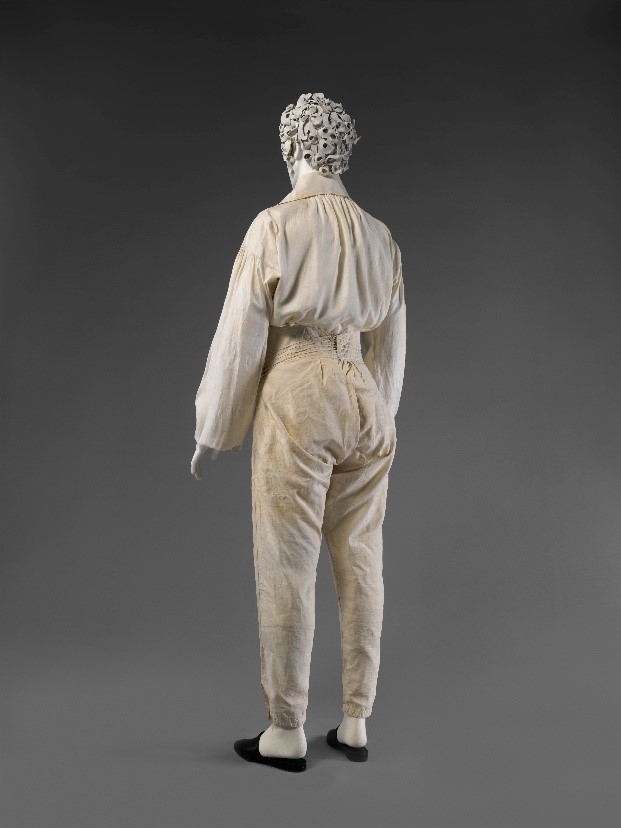
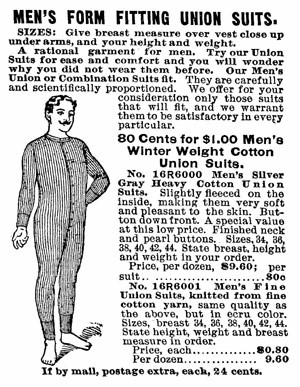
Underpants, French. Circa 1830. 1902 Sears, Roebuck catalogue advert.
Image courtesy: Metropolitan Museum of Art, via Wikipedia CC0 1.0 Image courtesy: Wikipedia (work in the public domain) 
Then, around the middle of the 19th century, a new undergarment for men that combined or united these two pieces of underwear into one became fashionable. It was a closer fitting, less bulky garment to wear. In Australia and the UK it was known at the combination suit; in America it was called the union suit.
There were various styles. One had a full-length button front, long legs and arms and was made from wool or flannel for use during cold winters. A later style was more “athletic” and suited to warmer climates. It was sleeveless with short legs and made of lighter weight cotton.

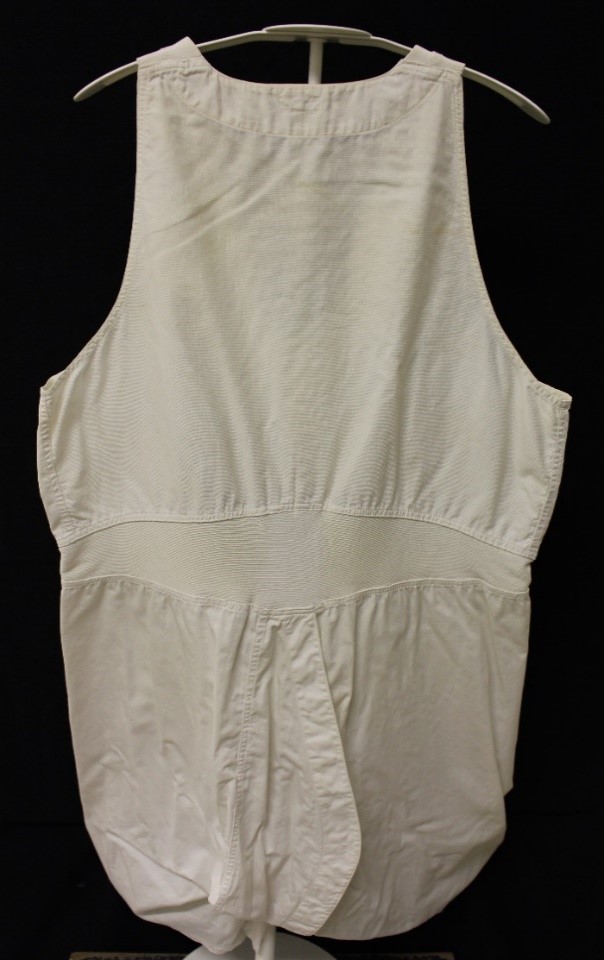
Male undergarment in one piece. Machine-made, medium size. White cotton with stretch fabric shoulder straps and waist inserts. Front and rear openings with button fastenings. Button placket to front with mother of pearl buttons. One button placket opening to rear. 1920s-1930s. (2003.16)

This style remained in common use until Y-front briefs and boxers were introduced in the mid-1930s. A new era of comfort and convenience had arrived.
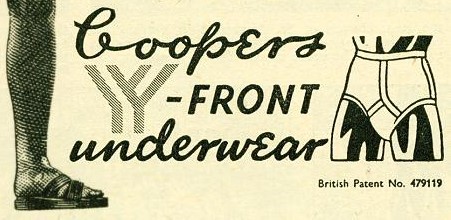
Coopers Y-front underwear advert (cropped). Punch November 15, 1950. Image courtesy: historyworld.co.uk

Modesty Panel
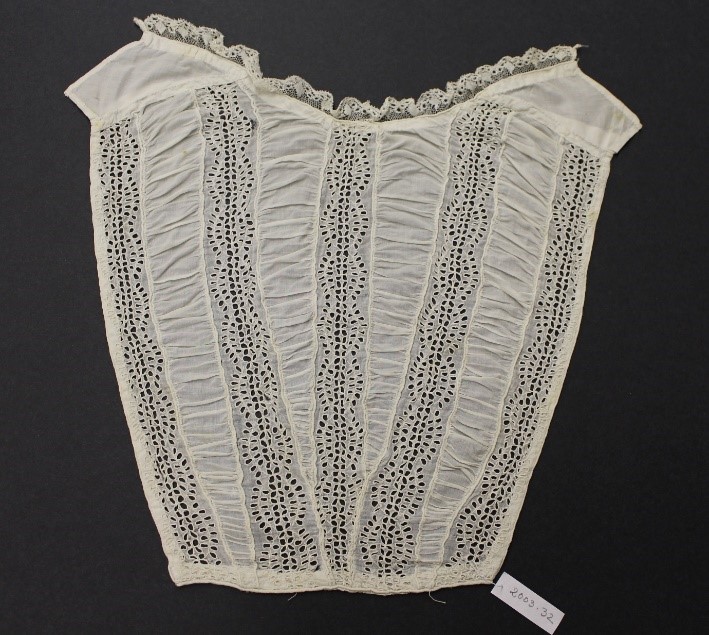
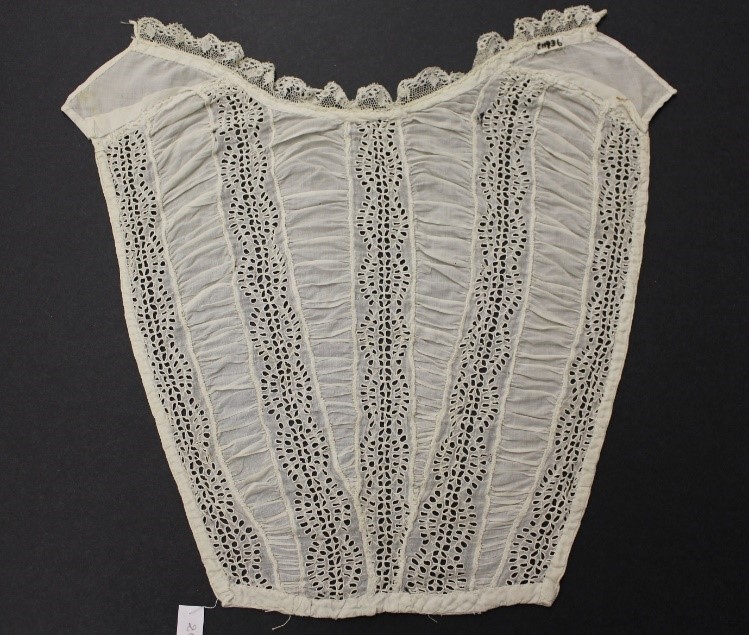
Girl’s cotton modesty front panel. Broderie Anglaise handmade neck edge. Bodice insert. Providing extra coverage with lace-up or front fastening garments. Circa 1870-1880. (2003.32)

Modesty Top
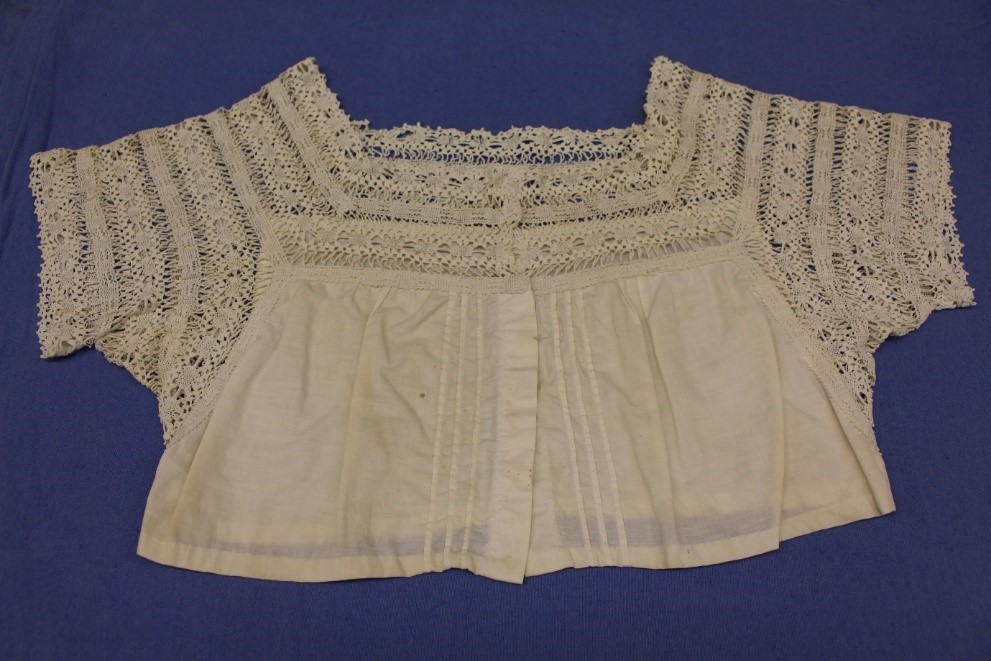
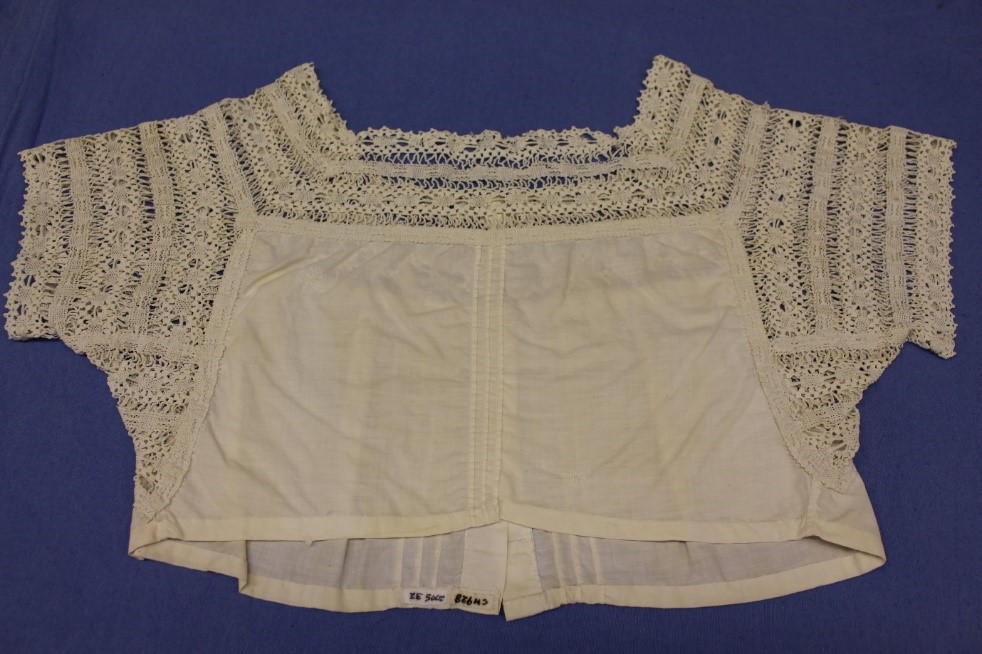
White cotton modesty top. Square neckline. The short sleeves and yoke are made up of machine-made strips of lace crocheted together. Front opening is fastened with press studs and one concealed fabric-covered metal button. There are three rows of pintucks either side of front opening and also down the centre back. (2005.32)

Acknowledgements


